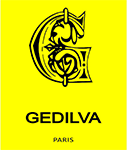Hats, with their practical forms, pretty and, sometimes eccentric, have been present in different looks for many, many centuries. In addition to protecting from the cold or sun, the hat can also identify and characterize occupational functions and distinguish positions, and also reveals personality when combined with a look, expressing sophistication and elegance.
For many years, the hat was used as a symbol of status, representing wealth and power. In royalty, there was the crown which symbolized the hierarchy of a social position.
Did you know…
…that one of the reasons Paris became the haute couture center was the production of hats? Indeed it was, and few people know this! The milliner Rose Bertin was one of France’s most influential women. Her main customer was Queen Marie Antoinette, who made her the most sought-after designer of those times.
Hat and fashion
Fashion is constantly innovating and reinventing itself. At the end of the 18th century, popular hairstyles were high and extravagant, and they were used to express patriotism in celebrations and major events. At that time, the hairdos were so well done that it was often almost impossible to notice where the hairstyle ended and where the hat began.
By the end of that century, despite having the mere function of keeping hair clean and neat, the Victorian toque became popular among ladies of society, thus reflecting an image of simplicity and refinement.
In this same era, in France and Great Britain, the first versions of the top-hat began to appear.
Due to its extravagance, and for being high and exotic, the top-hat received the French nickname INCROYABLE (incredible). In the 1830s, it had already permeated the entire society and, influenced by Prince Albert of Great Britain, it was considered part of the male attire in its classic black version.
This fashion lasted until the turn of the century, when more casual styles came about, such as the bowler and the trilby hats. The bowler was designed by the Londoners Thomas and William Bowler for the James Lock & Co. hat makers. It was licensed by the Edward Coke shop to be used by their gamekeepers, and, due to its hardness, served to protect the head from the lower tree branches when they were horse riding.
With time, it was used by the elite classes, in addition to crossing borders and reaching the United States with the name “derby”.
What’s interesting about this hat is that it is still used today. In Bolivia, for example, it is part of the traditional costume used for their Independence Day.
As for the trilby, it became popular after the debut of the melodrama “Trilby”, by George Du Maurier, based on the novel he wrote in 1894.
It was during the Edwardian period that the hat had its bohemian glamor while being used by artists and writers of the London Bloomsbury Group.
At the beginning of the 20th century, the Edwardian hat gained market prominence. High and extravagant, it was composed of tulles, ribbons, flowers, and feathers, and it was generally designed with a pompadour structure and covered by tufts of hair – natural or artificial.
By the end of the Belle Époque (1871-1914), by initiative of Paul Poiret, the turban once again gained many followers. It was practical and its colors were vivid, and it later on became Simone of Beauvoir’s favorite accessory, and thus an icon of “left-wing” feminism.
In the 1920s, the hat became the crowd favorite for the horse racing brotherhood in Great Britain, and is still used today by both men and women, casting an image of sophisticated informality.
Most trends were dictated by Worth, in Paris; by Lucile, in London; and by Anna Ben-Yusuf, in New York. Still at the beginning of the 1920s, the minimalist and no tabs cloche hat became popular and part of the flapper style, as well as short hair and the straight cut chemise dress, which made the look more androgynous.
Made of felt, it was close-cut, tight on the head, and often had a diamond brooch detail in Art Deco style. Because it covered the eyes, this model required women to keep their head up, giving them a more lofty appearance and placing them at the height of those times.
As for the cocktail hat, which consisted of small head ornaments such as a netted veil that fell slightly over the face, it was the icon of the 1950s post-war femininity, and was often used in formal parties and occasions.
In turn, the pillbox hat, simple and minimalistic, inspired by the military style, reached the spotlight in 1961, when Jackie Kennedy appeared wearing one by Halston – the head hat maker for the New Yorker, Bergdorf Goodman – during the ceremony when her husband took office as President of the United States.
In 1979, the pork pie hat, with its flattened cup, inward circling crumples, and upward curling tab, gained prominence, influenced by musical celebrity tastes. This model remained forgotten for some time, but has been seen again in recent years.
As one might observe, the hat has always been associated with elegance. Some models have become dormant for some time, and have come back, or were reinvented, but this fashion has never ceased to exist. Currently it remains an icon of sophistication, supplementing and casting more beauty to different looks.
Changing in form and definition throughout its history, fascinators have always been a lightweight alternative to the traditional hat. Affixed to the head with a headband, comb, or clip, it can be seen in a variety of elaborate designs using feathers, flowers, or beads. Used in similar fashion like the cocktail hat, it is a formal accessory, and popular choice among the Royal crowd. Kate Middleton is notable for toting a version of the fascinator that incorporates a small hat-like base, now known as the hatinato
